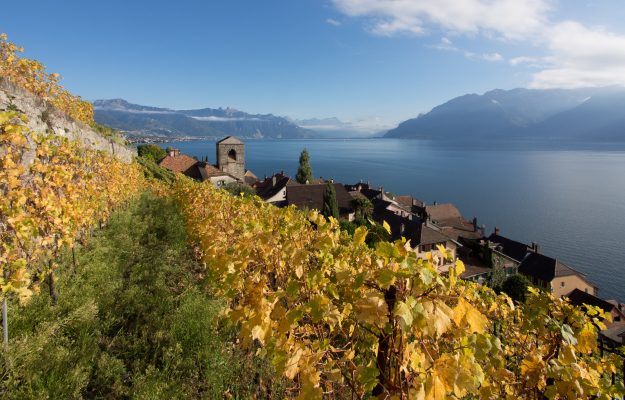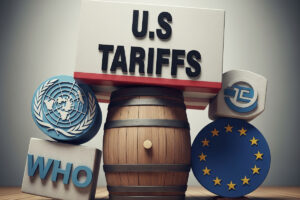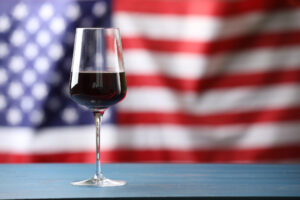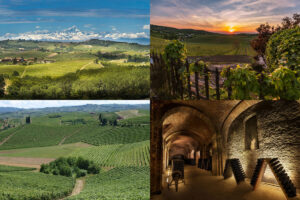Little Switzerland, which has 8 million inhabitants, thanks to its constantly growing GDP and one of the highest purchasing power in the world, is a very precious wine industry. Italy and France, are well aware of this, the first two wine producers in the world, who have always shared the largest slices of the Swiss cake. The director of Ice Bern, Simona Bernardini, explains to WineNews, “Italy has taken the primacy of France since 2014, and today is the leading supplier of wine in Switzerland, ahead of France and Spain. Furthermore, Switzerland produces wine as well, obviously without being able to satisfy internal needs, which slightly decreased in 2017, because of health reasons, which are limiting alcohol consumption. In any case, wine is the third most consumed drink, with 33 liters per capita, behind soft drinks and beer”.
When it comes to the favorite types, among those imported from Italy, “the winner is always red wine, but the sparkling wine, especially Prosecco, has obviously arrived as well, undermining, at least in volume, the Champagne. As for the red, if once we looked mainly at the closest regions, such as Piedmont and Veneto, and Tuscany of course, today there is great interest in southern Italy, from Sicily to Campania, but the latest trend - continues Bernardini - is Puglia. Focusing on prices, “we have to make a distinction: large-scale distribution tends to pay less, but in general, the trend is fluctuating. The struggle for positioning on the supermarket shelf is between 5 and 10 francs per bottle, and the average price of wine imported from Italy, in the last 12 months, has seen an increase in price for both white wines, to 4.60 francs per bottle, and for red wines, to 6.70 francs per bottle (+60 francs cents)”.
The prices are therefore decidedly higher than the average, also because, as the director of Ice in Bern recalls, “Switzerland, being outside the European Union, has a system of tariff barriers that tend to raise prices, because the importer has to pay duties, membership in the control of the trade in wines and to face a higher labor cost throughout the supply chain, which falls on the final cost of the bottle”.
However, when we talk about Switzerland, an important industry, we are also talking about a small producer, which has 15,000 hectares of vineyards, of which 43% are white varieties, and 57% red varieties, and the most common varieties, but declining, are Pinot Noir, Chasselas, and Gamay, while grow Sauvignon Blanc, Savagnin Blanc, Petite Arvine, Chardonnay and Merlot. The 2017 harvest, with 79 million liters, was 26% down on the 2016 harvest (-28.5 million liters).
In 2017 the total consumption of Swiss and international wines continued to fall and compared to 2016 by about 4 million liters (-1.6%), reaching 249 million liters of wine consumed. Overall, foreign white wine consumption rose by 126,200 liters (+0.3%) to 39.9 million liters, red wine consumption decreased by 1.6% to 122.6 million liters, while sparkling wine consumption continued to increase by +3.2% to 19.3 million liters, reaching a new record.
In this context, imports from Italy in 2017 reached 717,000 hectolitres, of which 505,000 hectolitres of red wines, 131,000 hectolitres of white wines and 109,000 hectolitres of sparkling wines, for a market share of 41.4%, ahead of France, which is still at 394,000 hectolitres (21.2%) in volumes, and Spain, with 306,000 hectolitres (16.5%). In terms of value, the turnover of Italian wine exported to Switzerland reaches 375 million euros, for a market share of 36.5%, with the gap over France contracting significantly: French wine is worth 343 million euros, 33.4% of the market, and Spanish wine 133 million euros, or 13% of total imports.
As far as imports of sparkling wine are concerned, in the last ten years they have grown by a third, and 56% of the relative supplies come from neighbouring countries south of Switzerland: the dominant supplier in terms of volumes is Italy, while in values France, which generates a percentage of 61% with an average price per bottle of 17.40 francs (15.66 euros), while the average price from Italy is 4.20 francs (3.78 euros). From Spain, 13% of sparkling wine was imported, with an average price of 3.30 francs (2.97 euros).
24% of bulk white wine was imported from Italy, 22% from France, 21% from Spain and 11% from South Africa. Imports of red wine accounted for 44% of total imports: Italy, France, and Spain account for about 4/5 of total imports. The relative industries percentages and the average price per bottle were equal: Italy 41%, average price 6.30 francs (5.67 euros); France 21%, average price 10.10 francs (9.09 euros); Spain 18%, average price 5.80 francs (5.22 euros). 24% of the bulk red wine imports come mainly from Italy (40%), France (29%) and Spain (15%).
Focus - Customs import stitistics
In 2017, a total of 186 million liters of wine, sparkling wine, sweet wine, specialty wine, and grape must be imported, or about 1.4 million liters more than the previous year (+0.7%). The imports within the customs quota were approximately 159 million liters. In 2017, as in 2016, the quota of 170 million liters was not completely exhausted.
The imports of white wine rose by 632,100 liters (+1.6%) to about 40 million liters. This increase is mainly due to imports of bottled white wine, which rose by 783,600 liters (+3.9%), while imports of bulk white wine (including industrial wine) fell by 151,500 liters (-0.8%). There was also a slight increase in imports of red wine (+527,500 liters, +0.4%), which amounted to 123 million liters. Imports of sparkling wine also increased about 19.5 million liters (+355,000 liters, +1.9%). Imports of sweet wine, specialty wines, and blends, and must, on the other hand, fell. For industrial wines, the negative trend of previous years continued, with a decrease of 2.4 million liters from 2014 to around 4 million liters (-36.7%).
Copyright © 2000/2025
Contatti: info@winenews.it
Seguici anche su Twitter: @WineNewsIt
Seguici anche su Facebook: @winenewsit
Questo articolo è tratto dall'archivio di WineNews - Tutti i diritti riservati - Copyright © 2000/2025








































































































































































































